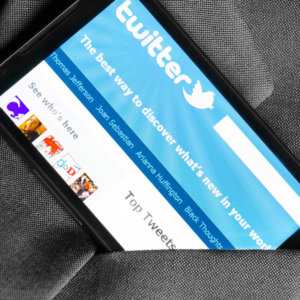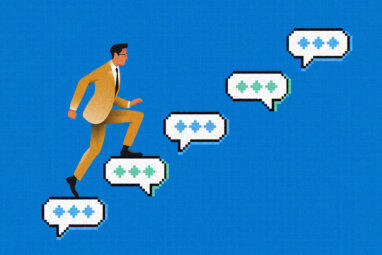How Twitter Users Can Generate Better Ideas
New research suggests that employees with a diverse Twitter network — one that exposes them to people and ideas they don’t already know — tend to generate better ideas.
Topics
Innovations never happen without good ideas. But what prompts people to come up with their best ideas? It’s hard to beat old-fashioned, face-to-face networking. Even Steve Jobs, renowned for his digital evangelism, recognized the importance of social interaction in achieving innovation. In his role as CEO of Pixar Animation Studios (a role he held in addition to being a cofounder and CEO of Apple Inc.), Jobs instructed the architect of Pixar’s new headquarters to design physical space that encouraged staff to get out of their offices and mingle, particularly with those with whom they normally wouldn’t interact. Jobs believed that serendipitous exchanges fueled innovation.1
A multitude of empirical studies confirm what Jobs intuitively knew.2 The more diverse a person’s social network, the more likely that person is to be innovative. A diverse network provides exposure to people from different fields who behave and think differently. Good ideas emerge when the new information received is combined with what a person already knows. But in today’s digitally connected world, many relationships are formed and maintained online through public social media platforms such as Twitter, Facebook and LinkedIn. Increasingly, employees are using such platforms for work-related purposes.3
Studying Twitter Networks
Can Twitter make employees more innovative? In particular, does having a greater diversity of virtual Twitter connections mean that good ideas are more likely to surface, as in the face-to-face world? To answer this question, we used a technique called organizational network analysis (ONA) to create visual representations of employee Twitter networks. We studied ten employee groups across five companies in a range of industries. (See “About the Research.”)
For example, EMC Corporation, a leading company in the information storage and infrastructure industry that is based in Hopkinton, Massachusetts, was one of the companies we studied. We analyzed hundreds of ideas submitted by EMC employees as part of their internal idea management system and correlated that behavior with Twitter usage. Here’s what we found.
First, Twitter users and non-users generally submitted the same number of ideas.
References (7)
1. W. Isaacson, “Steve Jobs” (New York: Simon & Schuster, 2011): 431.
2. Ron Burt’s seminal study on structural holes has proven to be influential in explaining how people accrue advantages from their social network. Gaps in a social network, called structural holes, create brokerage opportunities. People on either side of the hole circulate in different flows of information, and benefits accrue to those individuals whose relationships span the structural hole. See R.S. Burt, “Structural Holes: The Social Structure of Competition” (Cambridge, Massachusetts: Harvard Business Press, 1992).






Comments (8)
Big Brother
Ricardo Ramos
Adam Garey
Jessica Sullivan
Ralf Lippold
mgjo2012
Jason McPherson
Amarendra Bhushan Dhiraj